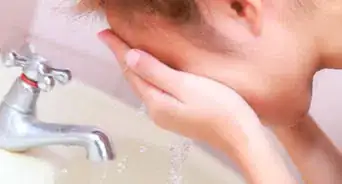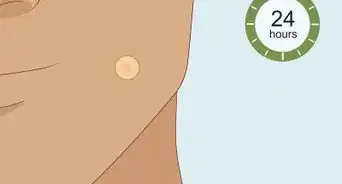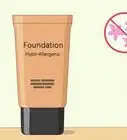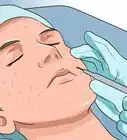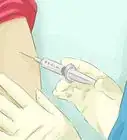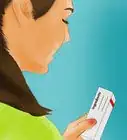This article was medically reviewed by Luba Lee, FNP-BC, MS. Luba Lee, FNP-BC is a Board-Certified Family Nurse Practitioner (FNP) and educator in Tennessee with over a decade of clinical experience. Luba has certifications in Pediatric Advanced Life Support (PALS), Emergency Medicine, Advanced Cardiac Life Support (ACLS), Team Building, and Critical Care Nursing. She received her Master of Science in Nursing (MSN) from the University of Tennessee in 2006.
There are 21 references cited in this article, which can be found at the bottom of the page.
This article has been viewed 128,278 times.
Benzoyl peroxide is the active ingredient in many topical acne treatments, both over-the-counter and by prescription. By understanding how benzoyl peroxide works, you can decide whether or not it is the right medication for you, and minimize and treat any irritation that occurs as a result of using medications that contain benzoyl peroxide.
Steps
Understanding the General Uses and Complications of Benzoyl Peroxide
-
1Know the uses of benzoyl peroxide. Benzoyl peroxide is the active ingredient in many topical acne medications, such as Benzac and Acne 10 Gel, among others.[1] Acne medication containing benzoyl peroxide comes in many different forms, such as gels, bar soaps, lotions and facial washes.[2] [3] Some of these medications are available over-the-counter, while others require a prescription.
- Make sure you read the active ingredients of the product to know if it contains benzoyl peroxide and what strength.
-
2Know how benzoyl peroxide works. Benzoyl peroxide works as an antimicrobial and exfoliative agent, helping to kill bacteria and to increase skin turnover.[4] [5] Benzoyl peroxide also helps to dry excess oil on the face.[6] It also works to reduce inflammation where it is applied.[7]Advertisement
-
3Identify the signs of an allergic reaction. It is known that 1 – 2% of people are allergic to benzoyl peroxide. While most people will experience skin irritation, redness and scaling with the use of benzoyl peroxide, these side effects should subside with time. If you continue to experience redness and scaling even when using very low concentrations applied on alternate days, you may be experiencing an allergic reaction to the drug.
- Irritation is extremely common during the first three weeks of use and should improve after four to six weeks.[8]
- Other possible signs of an allergic or negative reaction include peeling, sensitivity, and dryness.[9]
- If you experience signs of a severe allergic reaction, including a tightness in the throat, shortness of breath, wheezing, low blood pressure, fainting, or collapse, call emergency services immediately.[10]
-
4Use only as directed. Whenever you use an over-the-counter product containing benzoyl peroxide, you should use that product in accordance with all of the instructions on the label. If you acquired the medication with a prescription, it is critical that you use benzoyl peroxide products as directed by a medical professional.[11] [12] [13]
-
5Limit exposure to other products. In severe cases of acne, it is common to combine using benzoyl peroxide with topical or oral antibiotics as well as tretinoin. It should be noted, however, combining benzoyl peroxide with other irritants, other skin care products with benzoyl peroxide or exposing yourself to excessive sunlight can increase the risk of skin irritation in the area where benzoyl peroxide was applied. Make sure to limit exposure to other irritants so that you can effectively gauge the efficacy of benzoyl peroxide products in treating your acne.[14] [15] [16]
- The side effects of combining other skin care products with benzoyl peroxide are similar to those that occur when you are having a genuine allergic reaction.
Testing the Product
-
1Apply benzoyl peroxide to clean skin. Wash and dry your skin before applying benzoyl peroxide, unless using a benzoyl peroxide facial wash.[17] Make sure your hands are clean before applying and wash your hands immediately afterwards.
-
2Apply in small doses. It is very important that you test any products containing benzoyl peroxide in small doses before applying liberally to affected areas. To do this, apply a small amount of the product to areas of your skin that are suffering from acne.[18] [19] [20]
- Start with the lowest concentration possible, such as 2 – 5%, to minimize skin irritation.
- Take care not to get benzoyl peroxide in your mouth, nose or broken skin. Do not apply it around your eyes or lips.[21] Benzoyl peroxide is designed to be a topical medication, and should not come into contact with mucous membranes, such as the nose, mouth or eyes. Flush the affected area with water if you get benzoyl peroxide in your eyes, mouth, or broken skin.
-
3Monitor the effects of benzoyl peroxide products. After applying a small amount of a benzoyl peroxide product to affected area, monitor that area for any signs of an allergic reaction. Note that mild redness, stinging or burning on initial application is expected. Applying this product at night should reduce appearance of redness by the morning. If irritation persists, use every other night.
- If you do not experience any negative side effects (sensitivity, excessive dryness, peeling) and see positive results, continue using the benzoyl peroxide product as directed by a doctor or the product’s packaging.
- In rare cases, more serious allergic reactions may occur. If you experience excessive swelling and trouble breathing, discontinue use of the product and contact a medical professional immediately.[22] [23]
-
4Discontinue use. If you begin to experience allergy symptoms after applying a benzoyl peroxide product, stop using that product immediately. Remember that some irritation is normal at first, but contact your doctor if you have any questions.
-
5Rinse any leftover product with room temperature water. Flush the area several times until the product is rinsed thoroughly off of your skin. Avoid splashing any of the water into your eyes, nose or mouth. Don't use soap, as this might further irritate your skin. Do not scrub; rather, gently rinse and rub your skin.[24]
-
6Pat dry. Do not rub your skin to dry it, as this can cause further irritation. You may use a towel, but a soft cloth like a clean T-shirt may be more gentle on your skin. Avoid using cotton balls as this may leave fibers on your skin.[25]
-
7Apply a gentle, all-natural moisturizer. All-natural moisturizers, in most cases, will prevent further irritation of the skin. A sensitive skin or no-fragrance version is likely to be best, but it is wise to consult a physician. Even products labeled "sensitive skin" or "no fragrance" have the potential to interact negatively with benzoyl peroxide. Virgin coconut oil is often used as a gentle moisturizer.[26]
-
8Do not reapply the benzoyl peroxide. Do not continue using benzoyl peroxide products on irritated skin or on skin that has been moisturized until you consult with your doctor.[27]
Limiting Exposure to Skin Irritants
-
1Do not apply products with other active ingredients. Skin care products contain a wide variety of active ingredients, many of which have the potential to react negatively with benzoyl peroxide. Because of this, do not apply other skin care products to the areas of skin you treated with benzoyl peroxide to avoid the negative side-effects of mixing skin care products.[28] [29]
- Make sure you read the label for the active ingredients in any and all skin care products. Look for products containing peeling agents such as resorcinol, salicylic acid, sulfur, or tretinoin. These should be avoided when using benzoyl peroxide.[30]
- Other products that may interact negatively with benzoyl peroxide include: isotretinoin (Accutane), dapsone, lime, hair dyes or removal creams, astringents, shaving creams, or after-shave lotions containing alcohol.[31]
- Consult your medical provider about how you could use other products in combination with benzoyl peroxide. Tretinoin is sometimes used in combination with benzoyl peroxide to treat severe acne and your doctor can instruct you on how to use both products while minimizing interactions.
-
2Avoid “doubling up” on benzoyl peroxide products. In addition to avoiding skin care products that contain alternative active ingredients to benzoyl peroxide, you also must avoid the use of other products containing benzoyl peroxide. Using multiple medications that contain benzoyl peroxide can cause your skin to react negatively simply because you have applied too much benzoyl peroxide to an affected area.
-
3Limit sun exposure. Stay out of the sun as much as possible and always wear a broad-spectrum sunblock with a minimum SPF 30. Wear a wide-brimmed hat to further protect your skin. Avoid tanning beds and sunlamps. If you get a sunburn, you should not use benzoyl peroxide unless directed by your doctor. [32]
- Using sunblock may prevent the darkening of your skin where you have applied benzoyl peroxide.
Consulting a Medical Professional
-
1Talk with your doctor or nurse practitioner about whether benzoyl peroxide is right for you. The type of acne you have will determine the type of treatment.[33] Ask your doctor about the benefits, risks, and potential side effects of using benzoyl peroxide. Write a list of any alternative therapies you have questions about and take it with you to your doctor's visit.
-
2Discuss any medications you may be on. Any other medications you are taking (including supplements, vitamins, and over-the-counter products) could cause a drug interaction.[34] [35] Other things you may want to discuss with your doctor include:
- Other creams (prescription or over-the-counter) that you are using
- The different forms of this medication (lotion, facial wash, etc.) and which one might work best for you
- The different concentrations of benzoyl peroxide and whether starting with the lowest possible dose (to minimize the possibility of irritation) is right for you
-
3Tell your doctor of any pre-existing skin conditions you may have. This can include eczema, dermatitis, broken/bleeding skin, or any other irritation.[36] Benzoyl peroxide is a topical medication only and any broken skin or open wounds would allow it to enter your body. Benzoyl peroxide may also make conditions such as eczema worse.[37]
-
4Inform your doctor if you have had a previous allergic reaction to benzoyl peroxide. If you have had an allergic reaction or severe irritation with benzoyl peroxide products in the past, you should avoid using benzoyl peroxide.[38] There are several other acne medications and therapies that you could use, however, so don't lose hope. Talk with your doctor about the alternatives.
-
5Ask your doctor about possible interactions. Benzoyl peroxide may interact with lotions, makeup, facial washes, perfume, or any other agents that may come in contact with your skin.[39] Ask your doctor before you use products like shaving cream or astringents, as they may make irritation from benzoyl peroxide therapy worse.[40]
-
6Tell your doctor if you are pregnant or breastfeeding, or if you plan to become pregnant or breastfeed. It is not clear if benzoyl peroxide would be unsafe for use during pregnancy or breastfeeding, which is why it is important to ask your doctor.[41] Be sure to consult with your OBGYN as well.
-
7Communicate with your doctor or nurse practitioner while using the product. You might need to adjust the dosage or discontinue using the product if you have severe side effects or if the treatment seems ineffective. While the information in this article is written to help you make informed decisions about benzoyl peroxide therapy and to help you minimize the possibility of irritation, it does not substitute for medical advice.[42]
Finding Alternative Treatments
-
1Know what options you have. Benzoyl peroxide is one of many acne treatments. Benzoyl peroxide is used for mild to moderate acne.[43] Other acne treatments can be suggested or prescribed by a doctor (usually a dermatologist) and include:
- Salicylic acid, clindamycin, doxycycline, erythromycin, and tetracycline.
- Topical medications such as retinoids (such as Retin-A) or Dapsone
- Topical or oral antibiotics
- Medications to control hormones, such as oral contraceptives (for women) or anti-androgen agent (for men)
- Isotretinoin (usually for the most severe cases of acne)
-
2Investigate alternative therapies. Not all acne treatments take the form of oral or topical medications. You may wish to look into other treatments performed by dermatologists. These treatments include light therapy, laser treatments, chemical peels, whitehead and blackhead extraction and steroid injections.[44] [45]
-
3Reduce stress. Though it is not entirely understood, there is a known connection between stress, cortisol, and increased acne.[46] Learn positive ways to cop with stress, such as exercise, meditation, or spending time in nature. Make stress reduction part of your routine.
-
4Adjust your diet. Though dermatologists debate the connection between diet and acne, some researchers have found that modifying your diet (adopting a low-glycemic diet, specifically) can be beneficial.[47]
-
5Use natural supplements. Some products, such as zinc, aloe vera, tea tree oil, though often disputed by dermatologists, have been tried as alternative, or additional, therapy to traditional acne treatments.[48]
-
6Investigate combined treatments. For moderate to severe acne, most dermatologists recommend a combination of treatments that pair topical medications with oral medications.[49]
Expert Q&A
-
QuestionWhat do I do when the skin around and under the pimple is turning a brown color?
 Luba Lee, FNP-BC, MSLuba Lee, FNP-BC is a Board-Certified Family Nurse Practitioner (FNP) and educator in Tennessee with over a decade of clinical experience. Luba has certifications in Pediatric Advanced Life Support (PALS), Emergency Medicine, Advanced Cardiac Life Support (ACLS), Team Building, and Critical Care Nursing. She received her Master of Science in Nursing (MSN) from the University of Tennessee in 2006.
Luba Lee, FNP-BC, MSLuba Lee, FNP-BC is a Board-Certified Family Nurse Practitioner (FNP) and educator in Tennessee with over a decade of clinical experience. Luba has certifications in Pediatric Advanced Life Support (PALS), Emergency Medicine, Advanced Cardiac Life Support (ACLS), Team Building, and Critical Care Nursing. She received her Master of Science in Nursing (MSN) from the University of Tennessee in 2006.
Board-Certified Family Nurse Practitioner The area that has been treated with benzoyl peroxide is especially sensitive to sunlight. Avoid sun exposure, apply sunblock and wear hat. Once your acne problem is under control darker areas of your skin can be treated using topical solutions, creams, chemical peels or laser. Getting a consultation with cosmetic dermatologist or nurse practitioner will help to determine your specific needs and come up with a plan.
The area that has been treated with benzoyl peroxide is especially sensitive to sunlight. Avoid sun exposure, apply sunblock and wear hat. Once your acne problem is under control darker areas of your skin can be treated using topical solutions, creams, chemical peels or laser. Getting a consultation with cosmetic dermatologist or nurse practitioner will help to determine your specific needs and come up with a plan. -
QuestionI got a burn mark from using Benzoyl Peroxide. What should I use to get rid of the burn?
 Luba Lee, FNP-BC, MSLuba Lee, FNP-BC is a Board-Certified Family Nurse Practitioner (FNP) and educator in Tennessee with over a decade of clinical experience. Luba has certifications in Pediatric Advanced Life Support (PALS), Emergency Medicine, Advanced Cardiac Life Support (ACLS), Team Building, and Critical Care Nursing. She received her Master of Science in Nursing (MSN) from the University of Tennessee in 2006.
Luba Lee, FNP-BC, MSLuba Lee, FNP-BC is a Board-Certified Family Nurse Practitioner (FNP) and educator in Tennessee with over a decade of clinical experience. Luba has certifications in Pediatric Advanced Life Support (PALS), Emergency Medicine, Advanced Cardiac Life Support (ACLS), Team Building, and Critical Care Nursing. She received her Master of Science in Nursing (MSN) from the University of Tennessee in 2006.
Board-Certified Family Nurse Practitioner To prevent burns you must avoid sun. Make sure you apply sunblock and wear a hat to avoid getting burns and dark spots where benzoyl peroxide has been used. It will take time, diligent use of moisturizer and sunblock application for your burn to subside.
To prevent burns you must avoid sun. Make sure you apply sunblock and wear a hat to avoid getting burns and dark spots where benzoyl peroxide has been used. It will take time, diligent use of moisturizer and sunblock application for your burn to subside.
Warnings
- Do not use benzoyl peroxide products if you are nursing or pregnant.[53]⧼thumbs_response⧽
- Never share benzoyl peroxide products with others, as they may have severe allergic reactions to the product.[54]⧼thumbs_response⧽
- Use benzoyl peroxide products only as recommended on the packaging or as prescribed by a doctor or dermatologist.[55]⧼thumbs_response⧽
References
- ↑ http://www.mayoclinic.org/drugs-supplements/benzoyl-peroxide-topical-route/description/drg-20062425
- ↑ http://www.mayoclinic.org/drugs-supplements/benzoyl-peroxide-topical-route/proper-use/drg-20062425
- ↑ http://www.mayoclinic.org/drugs-supplements/benzoyl-peroxide-topical-route/description/drg-20062425
- ↑ http://www.mayoclinic.org/drugs-supplements/benzoyl-peroxide-topical-route/proper-use/drg-20062425
- ↑ http://www.medscape.com/viewarticle/726464_7
- ↑ http://www.mayoclinic.org/drugs-supplements/benzoyl-peroxide-topical-route/proper-use/drg-20062425
- ↑ http://www.medscape.com/viewarticle/726464_7
- ↑ http://www.mayoclinic.org/drugs-supplements/benzoyl-peroxide-topical-route/precautions/drg-20062425
- ↑ http://www.webmd.com/skin-problems-and-treatments/acne/news/20140625/some-acne-products-can-trigger-severe-allergic-reactions-fda#1
- ↑ http://www.webmd.com/skin-problems-and-treatments/acne/news/20140625/some-acne-products-can-trigger-severe-allergic-reactions-fda#1
- ↑ http://www.mayoclinic.org/drugs-supplements/benzoyl-peroxide-topical-route/proper-use/drg-20062425
- ↑ http://www.medscape.com/viewarticle/726464_7
- ↑ http://www.mayoclinic.org/drugs-supplements/benzoyl-peroxide-topical-route/proper-use/drg-20062425
- ↑ http://www.mayoclinic.org/drugs-supplements/benzoyl-peroxide-topical-route/proper-use/drg-20062425
- ↑ http://www.medscape.com/viewarticle/726464_7
- ↑ http://www.mayoclinic.org/drugs-supplements/benzoyl-peroxide-topical-route/proper-use/drg-20062425
- ↑ http://www.mayoclinic.org/drugs-supplements/benzoyl-peroxide-topical-route/proper-use/drg-20062425
- ↑ http://www.mayoclinic.org/drugs-supplements/benzoyl-peroxide-topical-route/proper-use/drg-20062425
- ↑ http://www.medscape.com/viewarticle/726464_7
- ↑ http://www.mayoclinic.org/drugs-supplements/benzoyl-peroxide-topical-route/proper-use/drg-20062425
- ↑ http://www.nlm.nih.gov/medlineplus/druginfo/meds/a601026.html
- ↑ http://www.mayoclinic.org/drugs-supplements/benzoyl-peroxide-topical-route/proper-use/drg-20062425
- ↑ http://www.medscape.com/viewarticle/726464_7
- ↑ http://www.webmd.com/drugs/2/drug-1344/benzoyl-peroxide-top/details
- ↑ http://www.webmd.com/drugs/2/drug-1344/benzoyl-peroxide-top/details
- ↑ https://www.nlm.nih.gov/medlineplus/druginfo/meds/a601026.html
- ↑ https://www.nlm.nih.gov/medlineplus/druginfo/meds/a601026.html
- ↑ http://www.mayoclinic.org/drugs-supplements/benzoyl-peroxide-topical-route/proper-use/drg-20062425
- ↑ http://www.medscape.com/viewarticle/726464_7
- ↑ http://www.mayoclinic.org/drugs-supplements/benzoyl-peroxide-topical-route/precautions/drg-20062425
- ↑ https://www.drugs.com/drug-interactions/benzoyl-peroxide-topical.html
- ↑ http://www.drugs.com/mtm/benzoyl-peroxide-topical.html
- ↑ http://www.webmd.com/skin-problems-and-treatments/acne/features/acne-right-treatment
- ↑ http://www.drugs.com/mtm/benzoyl-peroxide-topical.html
- ↑ http://www.mayoclinic.org/drugs-supplements/benzoyl-peroxide-topical-route/precautions/drg-20062425
- ↑ http://www.mayoclinic.org/drugs-supplements/benzoyl-peroxide-topical-route/before-using/drg-20062425
- ↑ http://www.mayoclinic.org/drugs-supplements/benzoyl-peroxide-topical-route/before-using/drg-20062425
- ↑ http://www.mayoclinic.org/drugs-supplements/benzoyl-peroxide-topical-route/before-using/drg-20062425
- ↑ http://www.mayoclinic.org/drugs-supplements/benzoyl-peroxide-topical-route/precautions/drg-20062425
- ↑ http://www.mayoclinic.org/drugs-supplements/benzoyl-peroxide-topical-route/precautions/drg-20062425
- ↑ http://www.drugs.com/mtm/benzoyl-peroxide-topical.html
- ↑ https://www.nlm.nih.gov/medlineplus/druginfo/meds/a601026.html
- ↑ http://www.nlm.nih.gov/medlineplus/druginfo/meds/a601026.html
- ↑ http://www.webmd.com/skin-problems-and-treatments/acne/acne-vulgaris-medications
- ↑ http://www.mayoclinic.org/diseases-conditions/acne/basics/treatment/con-20020580
- ↑ http://www.webmd.com/skin-problems-and-treatments/acne/features/stress-and-acne#1
- ↑ http://www.ncbi.nlm.nih.gov/pmc/articles/PMC2836431/
- ↑ http://www.mayoclinic.org/diseases-conditions/acne/basics/alternative-medicine/con-20020580
- ↑ http://www.webmd.com/skin-problems-and-treatments/acne/acne-vulgaris-medications
- ↑ https://www.nlm.nih.gov/medlineplus/druginfo/meds/a601026.html
- ↑ https://www.nlm.nih.gov/medlineplus/druginfo/meds/a601026.html
- ↑ https://www.nlm.nih.gov/medlineplus/druginfo/meds/a601026.html
- ↑ https://www.nlm.nih.gov/medlineplus/druginfo/meds/a601026.html
- ↑ https://www.nlm.nih.gov/medlineplus/druginfo/meds/a601026.html
- ↑ https://www.nlm.nih.gov/medlineplus/druginfo/meds/a601026.html
About This Article
Benzoyl peroxide is a common ingredient in topical acne medications, like gels, lotions, and face washes. While it's normal to experience some level of redness and scaling when you first start using benzoyl peroxide, more severe side effects, like peeling, sensitivity, and dryness, or side effects that don't go away after 4-6 weeks of use could be a sign that you're allergic to benzoyl peroxide or not using it correctly. To avoid the negative side effects, always follow the instructions given on the label or by your doctor. Additionally, avoid applying benzoyl peroxide with other products, like astringents, lotions containing alcohol, or creams with salicylic acid in them, since it can increase your chances of having a reaction. You should also try to stay out of the sun as much as possible and wear sunscreen with at least SPF 30 when you're outside since benzoyl peroxide can make your skin more prone to sunburn. For tips from our Medical co-author, like how to find alternatives to benzoyl peroxide, read on!

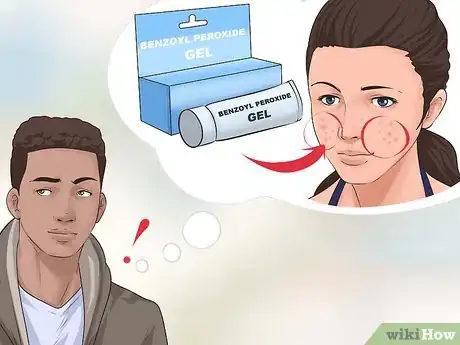
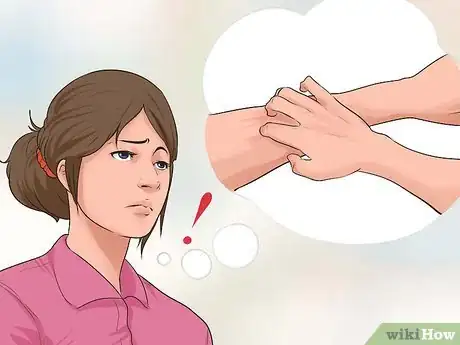
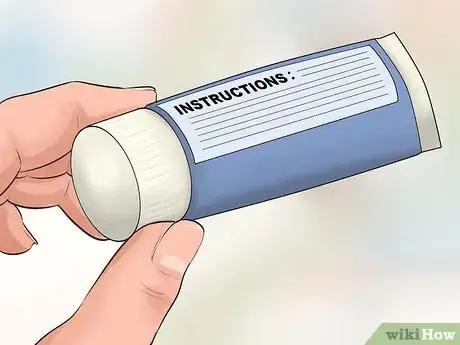


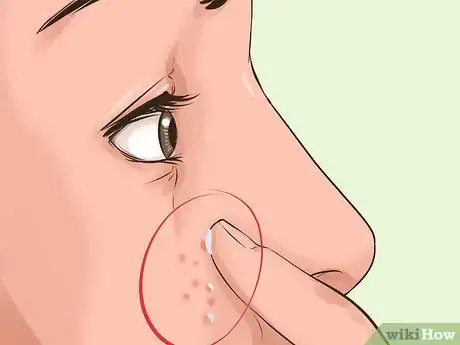
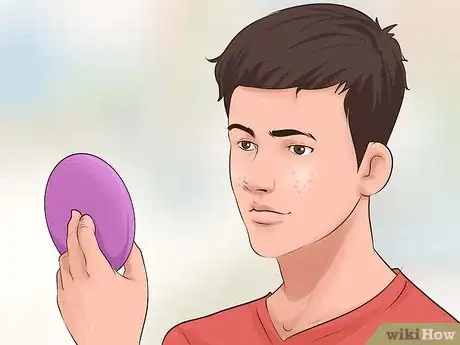
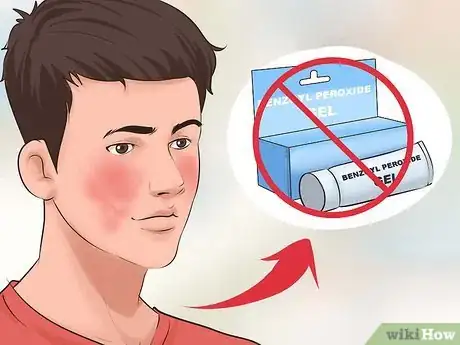
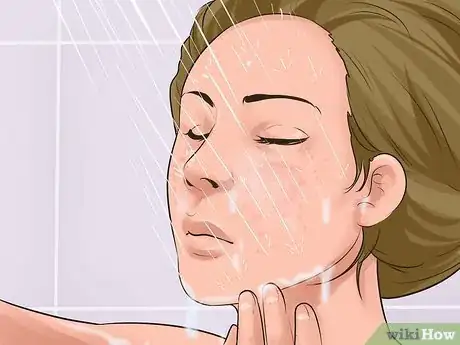
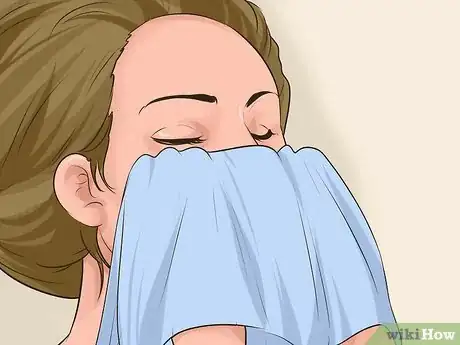
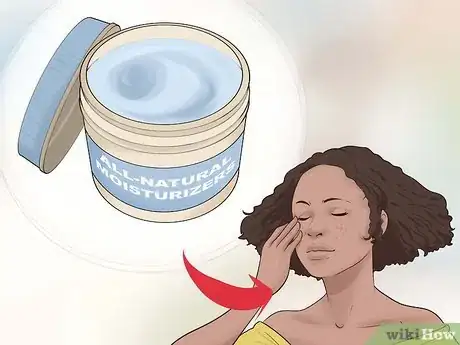
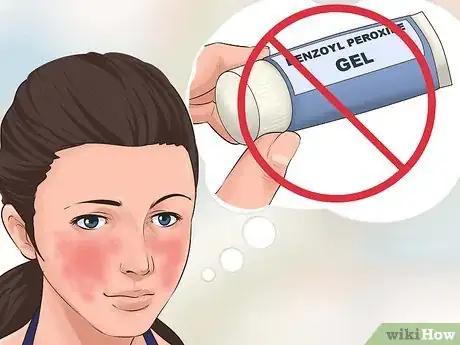

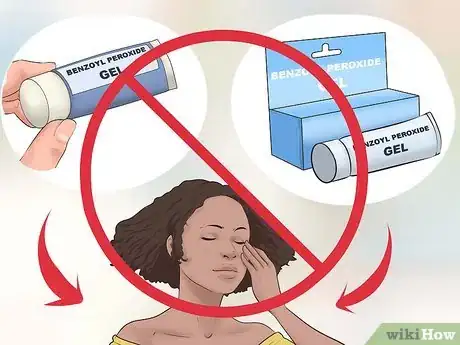
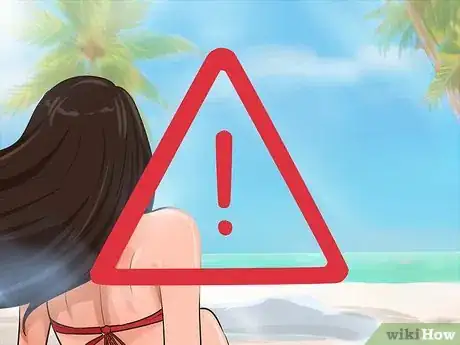
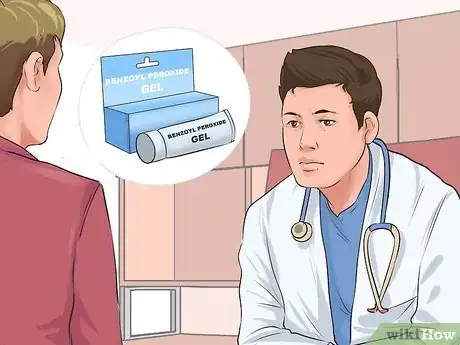
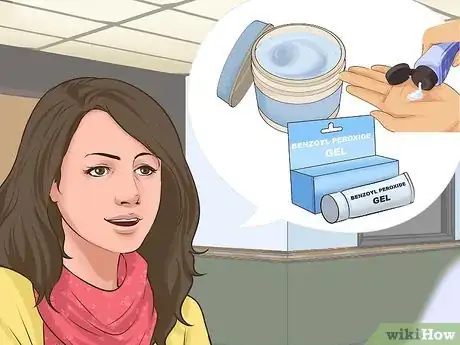
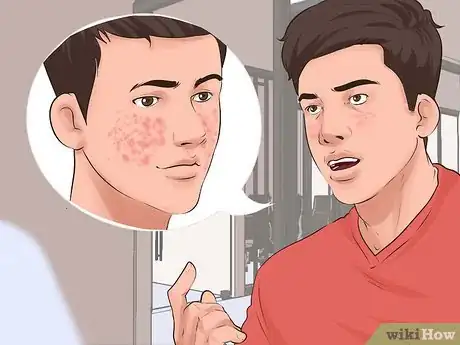

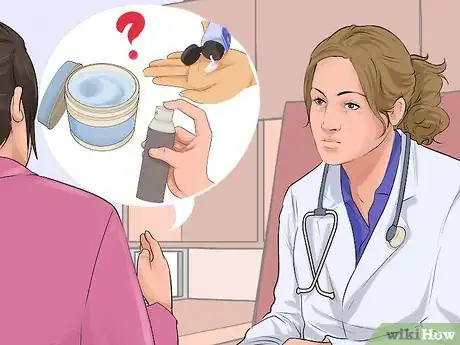
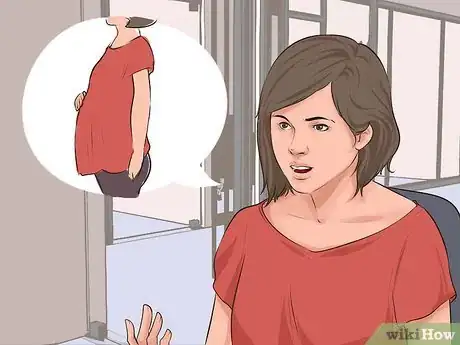
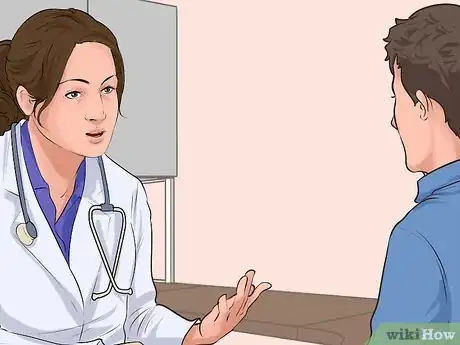

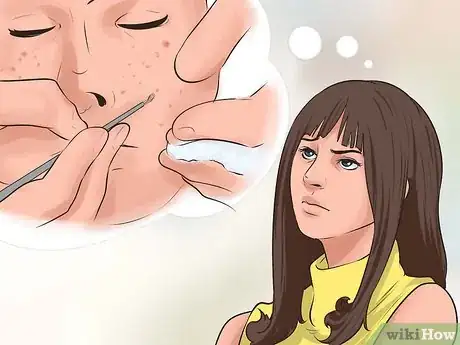

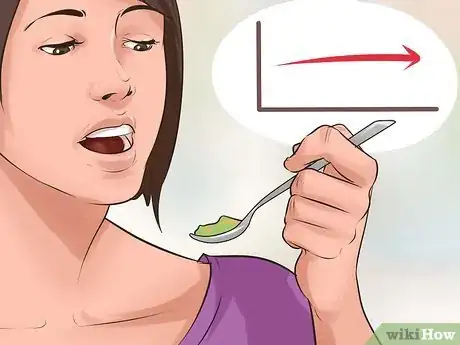

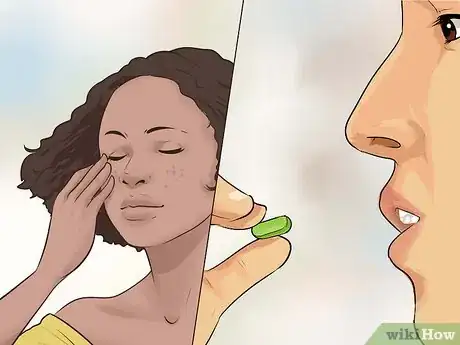




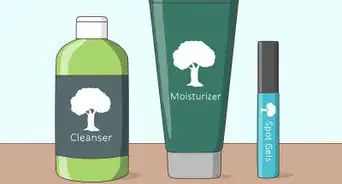
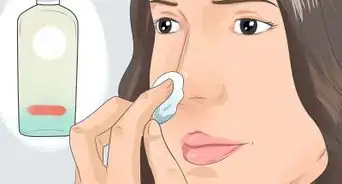
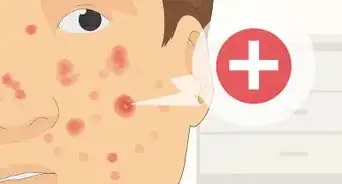

-Step-8-Version-2.webp)
